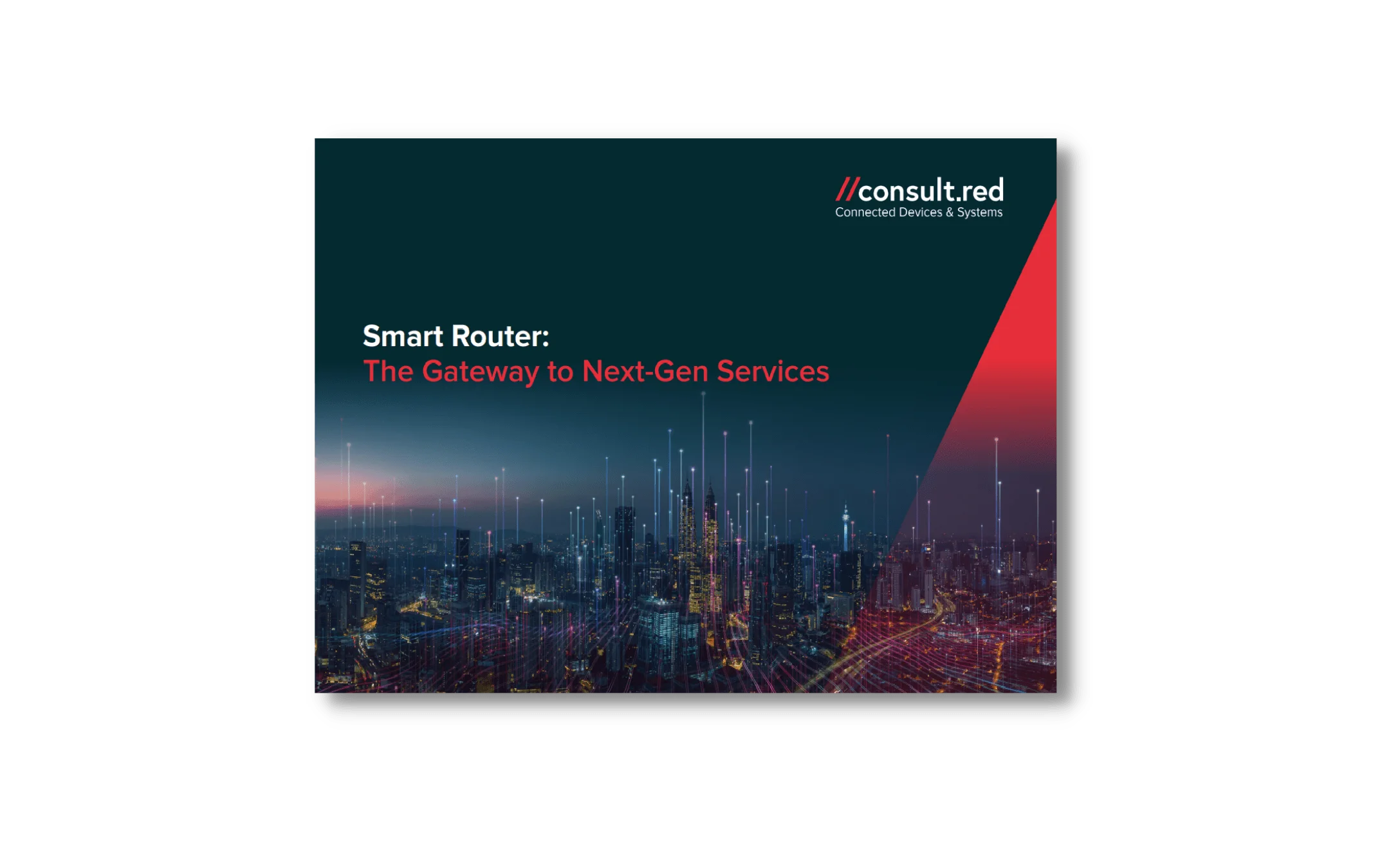Lean routers mean business (Cost-optimized AND Smart)
The Smart Router is poised to transform operator fortunes at the intelligent edge.
From a lowly, fixed-function terminal – a new approach to software development and deployment can deliver operators immediate operational cost efficiencies and benefits, as well as provide an agile, multi-faceted platform for new technology at the heart of the smart home.
A useful analogy is the evolution of the mobile phone. This began life as a relatively dumb terminal for voice communication. Adding SMS and the ability to send/receive text was an advance but when Apple transformed the handset into a software platform with the iPhone, it revolutionised the whole sector.
The Smart Router could follow a similar trajectory and unlock a wave of innovation leading to a slew of new operator-led services and monetisation opportunities – but with one crucial exception.
As the smartphone became a platform for applications the handset itself became more technologically advanced to cope. Higher-spec cameras, more RAM, more processing power and high-resolution screens all added to smartphone complexity – and cost.
But the last thing the operator wants is the burden of managing more expensive, more complex devices in the field.
Fortunately, the Smart Router concept and its proven technology mean you can get to market quicker, launch and operate as a lean and highly optimised device, and then layer on additional sophisticated apps and services as you are running it.
Foundational software and Flexible Lifecycle Management
One reason this is possible is that the operating software delivering all the required core functionality is separated from both operational and customer-facing applications. Operators can start with a very basic offering with the required software that drives the device and layer on applications over time as and when needed.
Since the software is packaged using lightweight executable containers, developers can install, run, update and subsequently retire applications remotely. Such flexible Lifecycle Management is possible because the entire stack is standards-based and interoperable. That includes the underlying open-source RDK-B or prplOS software, as well as the chipset and all the services and apps that run on the platform.
This standards-based open approach gives operators complete flexibility now and in the future across multiple device manufacturers (OEMs), multiple software platforms and multiple services and in many cases – across multiple territories.
An operator can source and procure CPE devices from multiple manufacturers. These devices may have different underlying (but open standards-based) software, and yet the operator would still be able to deploy the same mix of pre-existing and field-proven services to them all. This flexibility effectively de-couples the hardware from the software services they run, allowing economies to be driven across hardware, software and operator geographies.
Lean, optimised and flexible
Flexibility stemming from the lean Smart Router enables quicker and more efficient deployment of new devices, which can be updated and extended in the field. With the core OS on the device, you can go to market sooner, confident in the knowledge that you can subsequently and easily deploy, install and run new apps while reducing development overhead.
Rather than having to release or fix everything in monolithic software updates that were historically required once or twice a year, the agile Smart Router enables you to make incremental updates much more easily without impacting core services. Containerisation allows developers to create and deploy applications faster and more securely.
Since the OS is lean and efficient, device hardware requirements are kept in check. Only the required services and applications are installed, and these are optimised for efficiency. It is even possible to deploy services on an as-needed basis, after all the operator’s backend and edge devices are intimately connected. Apps are also ringfenced to make sure they do not hog resources or adversely impact the performance of the device. If there are any issues they can be shut down, disabled and restarted independently without impacting the core functionality.
Operational effectiveness and efficiency
Key operational services are enabled by the Smart Router, enabling the operator to reduce operational costs and improve customer satisfaction. A flexible software platform allows for deployable services which can be used to monitor service availability and performance, and rapidly investigate any identified issues.
This proactive approach puts the operator well ahead of any issues so that they can pre-emptively communicate to impacted end-users, and test/fix issues before those end-users are affected.
This all results in a reduction in support issues, fewer support calls to operator call centres, and potentially fewer truck rolls to manage reported issues.
Addressing cost and data concerns
Further cost efficiencies are made possible by delivering ‘smart’ functionality where it is required – either in the cloud, at the edge of the network or on the device itself. Operators and service providers tend to use a mix depending on their legacy infrastructure and their strategic direction. What Smart Router enables is the ability to move that smart capability from the cloud to the edge and to the device as appropriate.
That could be a decision driven by the associated cost of data processing and delivery through the cloud. The decision may also be driven by data and security, for example in Europe, where operators need to adhere to GDPR legislation. In Germany, for instance, concerns are acute that private data is not being transmitted to a third party by the cloud or across the network.
The ability to keep all your data processing locally on the device gateway helps operators to mitigate data transfer concerns. You can of course leverage cloud connectivity if required and where appropriate for a given service, and where the end-user has agreed to the related data transfer (for example, always on home security monitoring).
Whatever the incentive, transferring smart functionality to wherever it makes the most sense, whenever it is needed, gives operators the flexibility to scale that they did not have previously.
No longer a dumb termination of the broadband pipe and never a complex, unwieldy piece of hardware, the Smart Router is lean and agile and ready for business.
We’re pioneers of the smart router concept and have successfully walked this path before
You can trust our ability to: guide pragmatic decision-making – balancing immediate and future needs; address key architectural considerations – ensuring design doesn’t introduce future constraints; and focus implementation – to get you to market quickly and efficiently.
Together we will ensure you maximise your return on your investment.




